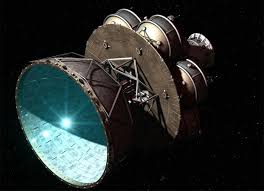Interstellar Travel: Humanity's Giant Leap into the Cosmos.
Introduction:
The human fascination with the cosmos has always been fueled by the desire to explore and understand the mysteries of the universe. From ancient stargazers to modern-day astronomers, we have continually pushed the boundaries of our knowledge. One of the ultimate dreams of humanity has been to travel to distant stars and explore the vastness of space beyond our solar system. While interstellar travel was once confined to the realms of science fiction, recent advancements in technology and our understanding of the universe are bringing us closer to turning this dream into a reality.
Challenges of Interstellar Travel:
The vast distances between stars present significant challenges for interstellar travel. Our nearest neighboring star, Proxima Centauri, is a staggering 4.24 light-years away. Even with our current spacecraft technology, it would take tens of thousands of years to reach it. To overcome this obstacle, scientists and engineers are exploring revolutionary concepts and technologies that could potentially enable interstellar travel within a human lifetime.
Propulsion Systems:
One of the key areas of research in interstellar travel is the development of advanced propulsion systems. Traditional chemical rockets, while efficient for short distances within our solar system, are simply not viable for interstellar travel due to their limited speed and fuel capacity. Several theoretical concepts, such as nuclear propulsion, antimatter propulsion, and fusion propulsion, have been proposed as potential solutions. These technologies could provide the necessary thrust to propel spacecraft at a significant fraction of the speed of light, reducing travel times to neighboring stars from millennia to decades.Breakthroughs in Energy Generation:
Another critical aspect of interstellar travel is the generation and storage of energy for extended journeys. Current spacecraft rely on solar panels or nuclear power, but these methods have limitations when it comes to interstellar missions. Research into advanced energy sources, such as matter-antimatter reactions or harnessing the energy of black holes, may offer solutions to provide the vast amounts of energy required for long-duration interstellar voyages.
Protecting Astronauts:
Interstellar travel poses numerous risks to the human body, including prolonged exposure to cosmic radiation, microgravity-induced health issues, and psychological challenges arising from isolation. Shielding technologies, improved life support systems, and advanced medical interventions are being studied to mitigate these risks. Furthermore, the development of artificial gravity systems and rotating habitats could help maintain astronaut health during the prolonged periods of weightlessness experienced during interstellar travel.The Search for Exoplanets:
The discovery of thousands of exoplanets in recent years has provided a wealth of potential destinations for interstellar missions. Identifying habitable worlds and determining their suitability for human colonization are crucial steps in planning interstellar travel. Space-based telescopes, such as the James Webb Space Telescope, will provide valuable data on the atmospheric composition of exoplanets, potentially revealing signs of life and aiding in target selection for future interstellar missions.
The Role of Robotics and AI:
Interstellar missions will likely involve a combination of human and robotic exploration. Autonomous robotic systems equipped with artificial intelligence (AI) can carry out tasks such as preliminary surveys, resource gathering, and even construction in advance of human arrival. AI will also play a crucial role in managing complex systems onboard spacecraft and assisting astronauts during long-duration missions.
Conclusion:
Interstellar travel represents the pinnacle of human exploration, pushing the boundaries of our knowledge, technology, and imagination. While significant challenges lie ahead, humanity is making remarkable progress in our quest to reach the stars. The combined efforts of scientists, engineers, and visionaries around the world are steadily advancing our understanding of interstellar travel and bringing us closer to a future where humanity's journey will extend beyond the confines of our home planet. As we unlock the frontiers of interstellar travel, we embark on a new era of exploration that holds the promise of unraveling the secrets of the universe and reshaping our place within it.





0 Comments:
Post a Comment
Subscribe to Post Comments [Atom]
<< Home